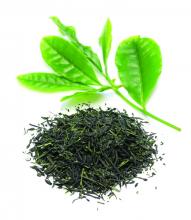It is important for dermatologists to recognize patients at an increased risk of skin aging early enough to initiate countermeasures. “Wrinkle-prone” skin types can be identified easily through use of the Baumann Skin Type Indicator Questionnaire.1 The wrinkle-prone Baumann skin type is associated with age or with lifestyle factors that increase the risk for promoting skin aging.2 Prevention and treatment of numerous signs of cutaneous aging can be achieved through consistent daily use of oral and topical products suited to the identified specifically wrinkle-prone Baumann skin type.
Because patient compliance is well known to be challenging, patient education is a key element of achieving positive outcomes with treatment regimens.3 This month, the column discusses the causes of aging with a focus on the cells involved in the process and ways to prevent and treat two major causes of skin aging – damage to DNA and mitochondrial DNA. Next month will discuss other causes, as well as oral and topical treatments for skin aging. The goal is to help clarify the science and marketing claims of skin care technologies targeted at treating skin aging.Skin aging
The numerous causes of skin aging can be divided into two broad categories: intrinsic and extrinsic. Intrinsic aging results from cellular processes that occur over time and is influenced by genetics. Such aging is characterized by decreased function of keratinocytes and fibroblasts, intra- and extracellular accumulation of by-products, reduced function of sirtuins (proteins that regulate cell metabolism and aging), mitochondrial damage, and loss of telomeres.
Extrinsic aging results from environmental exposures that engender cell damage, including UV light, infrared and radiation exposure, air pollution, smoking, tanning beds, alcohol and drug usage, stress, and poor diet. Extrinsic aging occurs as a result of intersecting processes caused by free radicals, DNA damage, glycation, inflammation, and other actions by the immune system. Generally, these factors can be partially mitigated through behavioral change. As much as 80% of facial aging can be ascribed to sun exposure.4 Several mechanisms through which sun exposure promotes aging have been well characterized. DNA damage results when UV light induces covalent bonds between nucleic acid base pairs and forms thymine dimers, which can alter tumor suppressor gene p53 function, thereby increasing the risk of cutaneous cancers and aging.5 UV exposure also yields free radicals that create damaging oxidative stress,6 which can activate the arachidonic acid pathway resulting in inflammation.7 Other skin aging mechanisms are not as well understood.
The cellular role in aging: Keratinocytes and fibroblasts
Keratinocyte cells found in layers that resemble the brick-and-mortar structure of a brick wall compose the epidermis. Each epidermal layer exhibits specific functional roles and characteristics. The top layer of the epidermis, known as the stratum corneum, is notable because it forms the skin barrier. This protective barrier contains cross-linked proteins for strength, antioxidants to protect the cells from free radicals, a bilayer lipid membrane layer to prevent water evaporation from the cells surface, immune cells, antimicrobial peptides, and a natural microbiome. Damage to any layer of the epidermis can unleash a cascade of events that can lead to increased cutaneous aging.
The dermis is composed of fibroblast cells, which synthesize collagen, elastin, hyaluronic acid, heparan sulfate, and other glycosaminoglycans that keep the skin smooth, strong, and healthy. Collagen confers strength, elastin provides elasticity, and the glycosaminoglycans such as hyaluronic acid, heparan sulfate, and dermatan sulfate bind water, impart volume to the skin, and provide support for important cell-to-cell communication.
When keratinocytes and fibroblasts age, they may no longer respond to cellular signals such as growth factors. The primary aim of any antiaging skin care regimen is to protect and rejuvenate these key skin cells.
Cellular damage that contributes to skin aging
The accumulated damage from intrinsic and extrinsic factors yields keratinocytes and fibroblasts that fail to produce important cellular components as well as they did when they were younger. Cellular factors that age cells include nuclear DNA damage, mitochondrial DNA damage, diminished lysosomal function, structural impairment of proteins, and damage to cell membranes. This harm occurs because of the direct effects of UV radiation, pollution, toxins, free radicals (oxidation), glycation, and inflammation.
Preventing and treating DNA damage
DNA damage presents as thymine-thymine dimers, pyrimidine-pyrimidine dimers, impaired telomeres, or other mutations. Broad-spectrum sunscreens and sun avoidance are important steps in preventing DNA damage induced from exposure to UV radiation. Other cosmeceutical agents have been designed to hinder the effects of UV radiation or to foster DNA repair. Besides sunscreen, the key members of the dermatologic armamentarium against DNA damage are various antioxidants. Data have been gathered over the last few decades that support the protective effects of antioxidants such as polypodium leucotomos,ascorbic acid, and green tea. Other antioxidants are associated with less data, but hypothetically should deliver similar benefits.


